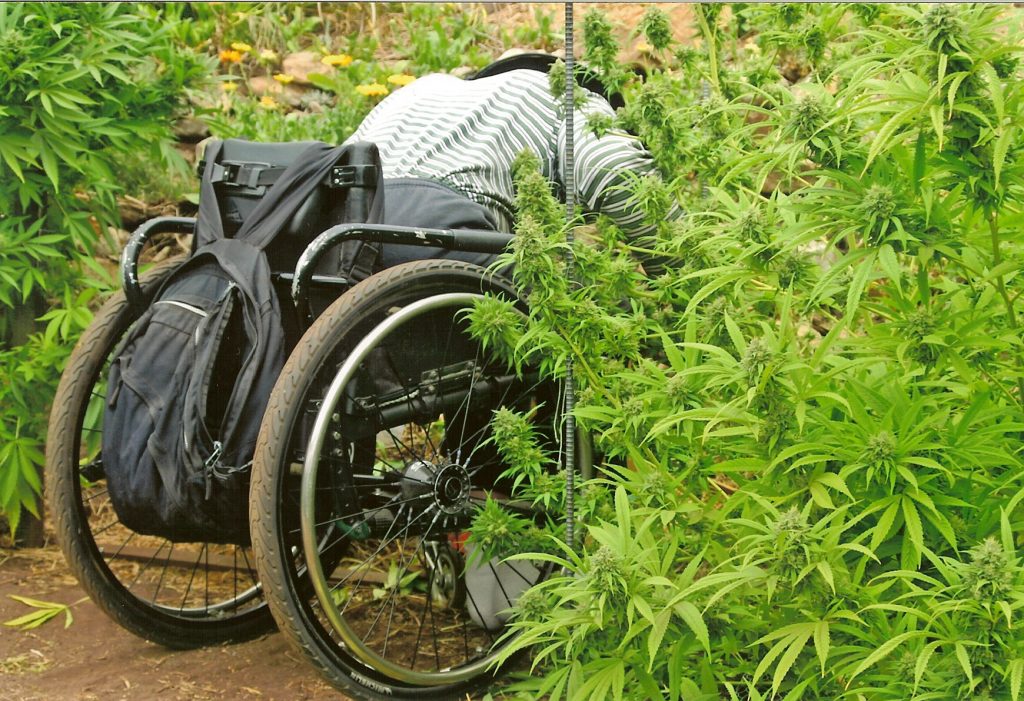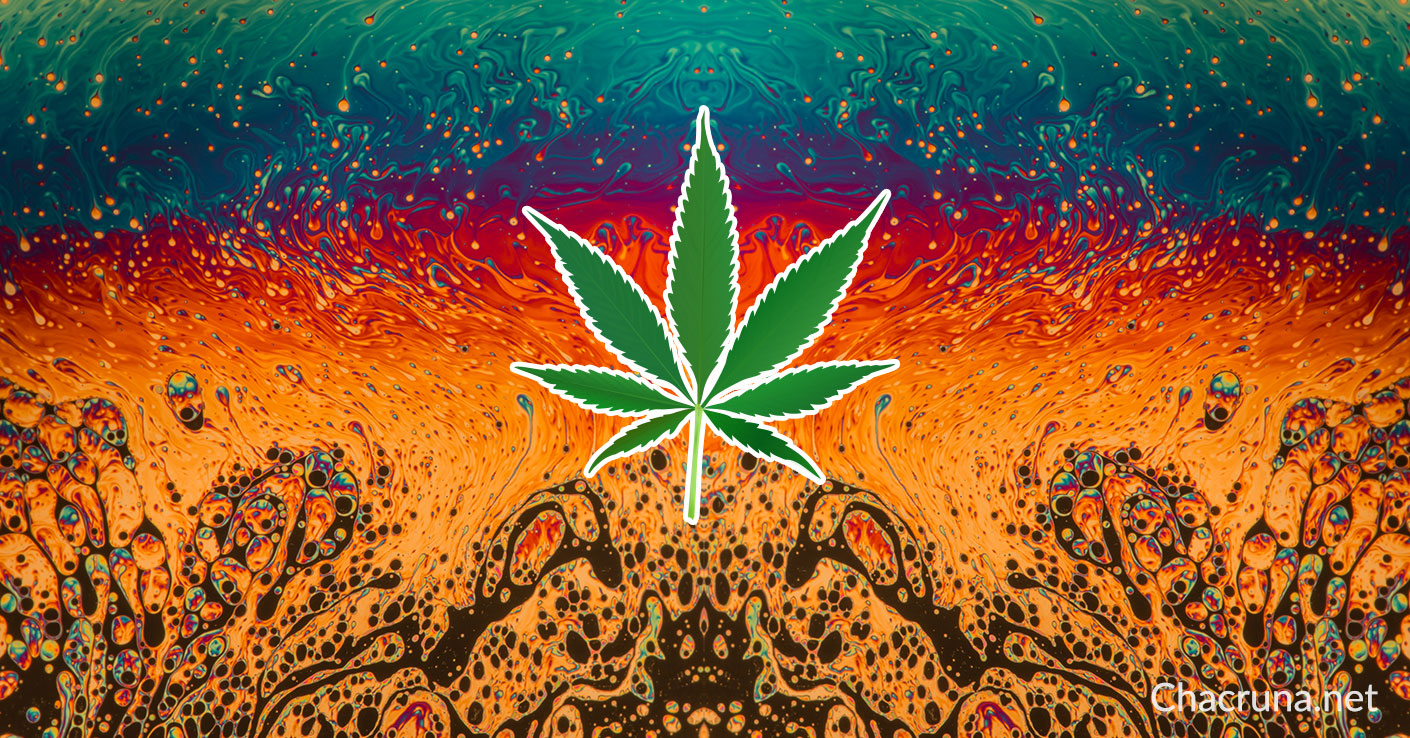Almost 200 million Americans live in states where medical marijuana is legally available; 60 million live in states where all prohibitions on adult use of marijuana have ended. Even under a Trump presidency, and with drug warrior Jeff Sessions as the nation’s Attorney General, marijuana prohibitionists in the US are losing the war on that drug. Now is a good time to take a hard look at their terms of surrender and the path forward to legalization of psychedelic medicines.
The marijuana reform movement has blazed a trail for those interested in legal access to ayahuasca, psilocybin mushrooms, peyote, and ibogaine. Following that trail provides some stunning glimpses of what an end to prohibition on psychoactive botanicals might look like; but it also offers warning signs. Below is a short trail guide, of sorts, intended to draw attention to a few of the most serious obstacles, dead ends, and hazards ahead.
1 Prepare for a Steep Climb
Botanicals face special challenges in being recognized as legitimate medicine. This problem is rooted less in the specific properties of the plants, and more in deeply entrenched ideological assumptions about medicine. In the U.S., botanicals aren’t defined as “real medicine,” in part, due to the history of the rise of the medical profession. In the nineteenth century, self-defined “Regular doctors” (almost exclusively men) distinguished themselves from “root and herb” practitioners (many of whom were women) through the use of stronger, often more toxic, drugs.1
The sidelining of “crude botanicals” in favor of single-compound pharmaceuticals has reverberated throughout contemporary debates over the medical use of marijuana. For example, in the early twenty-first century, US Deputy Drug Czar Andrea Barthwell told a Congressional Committee that cannabis should not be considered a real medicine because it’s “not just a single drug… it contains more than 400 chemicals.” Furthermore, its delivery system was primitive, according to Volkow: “there is nothing that tells us from the science now that a smoked, crude botanical should be a medication.”2
As I discuss in my book Dying to Get High: Marijuana as Medicine, co-authored by Richard J. Webb, in order to understand “why some drugs, but not all, get labeled ‘medicine’, why some healers, but not others, are ‘Regular doctors,’” it is important to ask “who beyond the patient… might benefit from such distinctions.”3
2 Don’t Rely on Toll Roads
In a culture of for-profit medicine, “benefit” is often defined in narrowly monetary terms. The medical marijuana movement itself has been divided over whether the path to profit is the best way to go. Currently, the most common form of legal medical marijuana provision is through commercial dispensaries. Some serve hundreds of patients; others serve hundreds of thousands. Harborside dispensary in Oakland, California, for example, has an annual revenue of about $25 million dollars and serves more than 200,000 members.
As these numbers suggest, the dispensary system is efficient in serving large numbers of patients. But for-profit provision has its limitations. Legalization of therapeutic botanicals pursued solely through the marketplace denies access to the poor. Even with the preservation of the Affordable Care Act, millions of Americans don’t have health insurance. And, even for those lucky enough to have coverage, botanical medicines are almost always excluded. In a discussion of medical marijuana access, patient Sherri Paris challenges the idea that for-profit legalization is an adequate goal: “If I’m a sick person and my finances are being destroyed—and believe me that’s what happens to sick people in this country—I need a different model for medical marijuana than dispensaries. They aren’t interested in the people who can’t buy their product. But the point is, most people couldn’t survive a terminal diagnosis economically, even if they managed to somehow survive it physically. It brings up the underlying issue of the failure of the marijuana reform movement to look at issues of poverty and illness in any significant way. The issue of prohibition can’t be solved without resolving the war on the poor” (S. Paris, personal communication, July 18, 2012).
3 Seek Alternative Routes
To avoid the deadend of for-profit legalization, some medical marijuana advocates have focused attention on preserving the right to individual cultivation. Currently, patients’ right to grow their own medicine is protected in some states (for example, California, Colorado, and Maine) but not others (Washington State). Another not-for-profit strategy involves patient cooperatives in which members collectively grow and redistribute marijuana outside of the formal marketplace.4

Patient working in the WAMM garden. Photo Credit: Jean Hanamoto
Despite their differences, not-for-profit models of individual and collective cultivation, as well as the for-profit dispensary model, represent a challenge to the predominant form of medicine in the United States: pharmaceuticals. Big Pharma’s response to the medical use of cannabis makes clear that they recognize this as a problem and as a possible opportunity.
Over the past two decades, Bristol-Myers Squibb, Eli Merck, GW Pharmaceuticals, and Pfizer have all sponsored international conferences on cannabinoid medicine. In 2011, Investor Place News asked “Could Legal Pot Give Big Pharma a Much-Needed High?” The story pointed out that medical marijuana sales had already breached the $2 billion mark in states where it had been made legal: “if the US [federal] government ever legalizes marijuana, sales would probably make the $11 billion Pfizer raked in on Lipitor worldwide last year look like chump change.”5
But whether those dollars will be captured by Big Pharma is far from certain. Worse yet, from the perspective of the pharmaceutical industry, is the fact that botanical cannabis is starting to replace existing pharmaceutical drugs for some conditions. In medical-marijuana states, prescriptions for painkillers and anti-depressants have fallen sharply compared to states without medical-marijuana laws.6
Americans appear eager for less toxic, more natural medicines; more than a third of us already make use of some form of so-called “complementary and alternative” medicine, with botanical medicine being the most common.7 The response by Big Pharma involves not only efforts to create synthetic versions of botanical compounds but also, in the case of cannabis, directly funding opposition to the legalization of marijuana. In 2016, for example, the pharmaceutical company Insys Therapeutics was the largest financial backer of opposition to marijuana legalization in Arizona.8 A year after the defeat of the legalization measure, Insys secured federal approval to market their new synthetic pharmaceutical cannabinoid drug, “Syndros.”9
From the perspective of the pharmaceutical industry, botanical cannabis is competition. Other less widely and frequently used psychoactive botanicals—such as psilocybin mushrooms or ayahuasca—are unlikely to pose the same level of threat to pharmaceutical interests. But the question remains: Should the pharmaceutical industry be the only portal through which individuals are legally able to access plant-based psychoactive medicines?
Because medical marijuana advocacy has taken place alongside a strong and well-organized movement agitating for broader legal adult use, the marijuana reform movement actually offers a strategy to prevent that outcome. These complementary efforts have blocked a pharmaceutical/medical monopoly on the plant.
4 Leave No One Behind
The War on Drugs is disproportionately a war on people of color. Legalization efforts that do not center race will remain grossly inadequate. In this regard, the marijuana reform model has been a failure. Legalization is reproducing rather than challenging racial inequalities. A Colorado Health Department report indicates that, in the first two years of full legalization in that state, marijuana arrest rates for Latino youth rose more than 20 percent and for Black youths by more than 50 percent.10 Meanwhile, marijuana arrests of White teenagers fell by nearly 10 percent despite similar patterns of use.
Not only are racial minorities still being swept up into the criminal justice system, they are also being excluded from the “green rush” that has accompanied legalization. Recently, in Maryland, the Legislative Black Caucus demanded disbanding the Maryland Medical Cannabis Commission because none of the 15 cultivation licenses went to firms owned by African Americans.11 By some accounts, only about 1 percent of the more than 3,000 storefront marijuana dispensaries in the United States are owned by Black people.12
As marijuana policy reform makes clear, an end to prohibition is not the end of the road. There’s a lot of work ahead, including dismantling mass incarceration and the New Jim Crow policies that have accompanied it.13 In efforts to legalize the use of other psychoactive botanicals, an important focus must be on histories of colonialism and imperialism as White First World peoples begin to embrace plant medicines cultivated in, and historically used by, those from the global South. A failure to pay close attention to such historical inequities, and to contemporary material interests fighting for control over psychoactive botanicals, may produce a kind of “legalization” that ends prohibition but undermines the vision of broader social change that drew so many of us to these plants in the first place.
References
- See Weisman C. (1998). Women’s health care. Baltimore: Johns Hopkins University Press, and Starr, P. (1982). The social transformation of american medicine. New York, City, NY: Basic Books. ↩
- Volkow, N. (2004, April 1) Hearings on medical marijuana. US House Sub-Committee on Criminal Justice, Drug Policy, and Human Resources. ↩
- Chapkis, W. & Webb, R. J. (2007). Dying to get high: Marijuana as medicine (page 17). New York City: New York University Press. ↩
- For more information about the WAMM model, see Chapkis and Webb (2007). ↩
- Cohen, B. (2011, May 31). Could legalized pot give big pharma a much-needed boost? Medical marijuana would be a huge payday for U.S. drug companies. Investor Place. Retrieved from: http://investorplace.com/2011/05/medical-marijuana-pharmaceutical-stocks-pfe-mrk-bmy/#.WNB2aI61to4 ↩
- Ingraham, C. (2016, July 13) One striking chart shows why pharma companies are fighting legal marijuana. Washington Post. Retrieved from: https://www.washingtonpost.com/news/wonk/wp/2016/07/13/one-striking-chart-shows-why-pharma-companies-are-fighting-legal-marijuana/?utm_term=.b2964e74fea0 ↩
- Barnes, P. M., Powell-Griner E,, McFann K., & Nahin, R. L. (2004, May 27). Complementary and alternative medicine use among adults in the united states. Advance data from vital and health statistics, no. 343. Hyattsville, MD: National Center for Health Statistics. Retrieved from: https://www.ncbi.nlm.nih.gov/pubmed/15188733 ↩
- Ingraham, C. (2017, March 24). A pharma company that spent $500,000 trying to keep pot illegal just got DEA approval for synthetic marijuana. Washington Post. Retrieved from: https://www.washingtonpost.com/news/wonk/wp/2017/03/24/a-pharma-company-that-spent-500000-trying-to-keep-pot-illegal-just-got-dea-approval-for-synthetic-marijuana/?utm_term=.29a03dd99ccb ↩
- Ibid. ↩
- Markus, B. (2016, June 29). As adults legally smoke pot in colorado, more minority kids arrested for it. Morning Edition (Radio broadcast), New York: NPR Radio. Retrieved from: http://www.npr.org/2016/06/29/483954157/as-adults-legally-smoke-pot-in-colorado-more-minority-kids-arrested-for-it ↩
- Cox, E. (2017, March 23). More medical marijuana licenses would be awarded in deal. Baltimore Sun. Retrieved from: http://www.baltimoresun.com/news/maryland/politics/bs-md-medical-marijuana-bill-20170323-story.html ↩
- Chicago-Lewis, A. (2016, March 16). How Black people are being shut out of America’s weed boom. BuzzFeed. Retrieved from: https://www.buzzfeed.com/amandachicagolewis/americas-white-only-weed-boom?utm_term=.ynJQDOVr1#.nhyr3oJbV ↩
- Alexander, M. 2010. The New Jim Crow. New York City, NY: New Press. ↩
Take a minute to browse our stock:
Did you enjoy reading this article?
Please support Chacruna's work by donating to us. We are an independent organization and we offer free education and advocacy for psychedelic plant medicines. We are a team of dedicated volunteers!
Can you help Chacruna advance cultural understanding around these substances?
Become a Chacruna Member
To make a direct donation click the button below:
Wednesday, June 9th, 2021 from 12-1:30pm PST
REGISTER FOR THIS EVENT HERE
There is growing enthusiasm in Jewish communities about possible ancient use and modern applications of plant medicine in Jewish spiritual development. Psychedelic Judaism introduce new potential modes of healing...
















